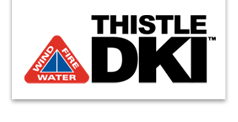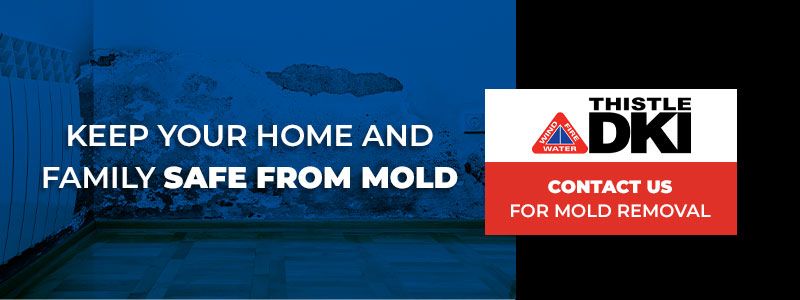When it comes to the health of our fur children, we take it very seriously. While we know the dangers that mold poses on human health, many people do not realize the toxic effects that mold can have on our pets. While only a handful of species of mold are toxic to both people and pets, the most common type can cause serious illnesses and potentially death to people and pets. This is why it is crucial to contact a mold remediation professional as soon as you suspect or notice any mold growth within your home.
Pets and Mold Exposure
Dogs can be curious creatures, and this unfortunately leaves them even more susceptible to mold inhalation and ingestion. Mold enters pets’ bodies by inhalation in areas where mold is present, which is typically in damp, dark, and warm places such as basements. While it may be visible on the walls, mold can also be difficult to detect and remove due to the fact that it also grows behind walls and underneath floors. It is especially important to call a mold remediation company after a flood in order to inspect and eliminate any potential traces of mold that could have grown.
While the immediate impact of mold on pets is often treatable, it is when the mold is left untreated that it can turn into something much more serious and more difficult to manage. The dangers of mold exposure on pets actually came to light in 2007 when a veterinarian found pulmonary hemorrhages (bleeding from the lungs) in two cats during pre-op procedures. The cats ultimately died after complications, and it was later found that the home they were living in had been contaminated with mold due to flood damage.
Symptoms of Mold Exposure in Pets
Here are some signs and symptoms that your pet has been affected by mold exposure. Be sure to take them to the veterinarian as soon as possible if you notice any of these signs:
- Difficulty breathing (wheezing, coughing, and struggling to breathe)
- Bleeding from the nose
- Excessively scratching themselves without the presence of fleas or flaky skin (pets may also develop sores or even start bleeding from excessive scratching)
- Chewing at their skin
- Excessively licking themselves
- Hair loss from chewing and licking themselves
- Rubbing their face on the floor or on furniture as a means to itch it
- Shaking their head (as a sign that their ears itch and/or hurt)
- Sleeping more than usual
- A sudden disinterest in playing
- Runny nose
- Appetite loss
- Extreme lethargy
- Allergic reactions such as runny eyes and nose, sneezing, etc.
- Pulmonary hemorrhage
- Constipation
Be sure to talk with your vet for more information about mold exposure in pets, and contact your veterinarian or a 24-hour vet if you suspect your pet appears to be unwell in any way. Even if there is no mold growth and they are showing these symptoms, it is worth being looked over by a veterinarian.
Mold can also be ingested by pets if they eat any spoiled products such as cheese that may contain mold. This type of mold releases poisonous chemicals that can cause pets to experience muscle spasms or body tremors. Again, if you suspect your pet has ingested or inhaled mold, it is best to take them to the veterinarian as soon as possible and contact a mold remediation professional to come take a look at your home to remove any mold growth.
Black Mold
Toxic black mold, otherwise known as Stachybotrys chartarum, feeds on organic materials in common households such as carpeting, drywall, insulation, or sub-flooring that have been exposed to moisture. This type of mold releases spores that can cause a range of dangerous symptoms to both humans and pets if ingested or inhaled. It is readily identifiable by its black (surprise!) color, and can turn your home from a cozy, comfortable place into one that causes strong allergic reactions.
Tips to Keep Your Pet Safe From Mold Ingestion or Inhalation:
- If you do suspect that you have mold growth in your home, be sure to do an inspection yourself and/or contact an experienced mold remediation technician in your area as soon as possible. Professional companies such as Thistle DKI in Las Vegas will ensure that a thorough mold removal is performed.
- For small areas of mold, create a mixture of water and detergent to clean the mold. For areas of mold that are larger than 10 square feet, you will want to contact a mold remediation company to handle its removal.
- Keep your pet away from areas where mold is more likely to grow, such as in the basement, crawl spaces, swamps, etc. Be sure to shut any doors to block access or set up a dog gate.
- Store your pet’s food in a safe, sealed container in order to keep out moisture and potential mold growth.
- Do not allow your pets access to the trash or any area where there may potentially be moldy food
- Use pet shampoos that help fight off allergens for your pets.
- Wash their food and water bowls every day.
- Clean pet cages, litter boxes, and other accessories regularly.
- Be sure to only purchase pet toys and beds that can be washed in hot water. This helps to ensure that they won’t get infested with dust mites or mold. If their bed or toys do get wet, be sure to wash them immediately.
- If your pet does begin to show symptoms of toxic black mold poisoning, take them to the vet immediately. If your vet is unable to see you, be sure to find a 24-hour emergency veterinarian in your area and tell them that your pet might be affected by mold.


